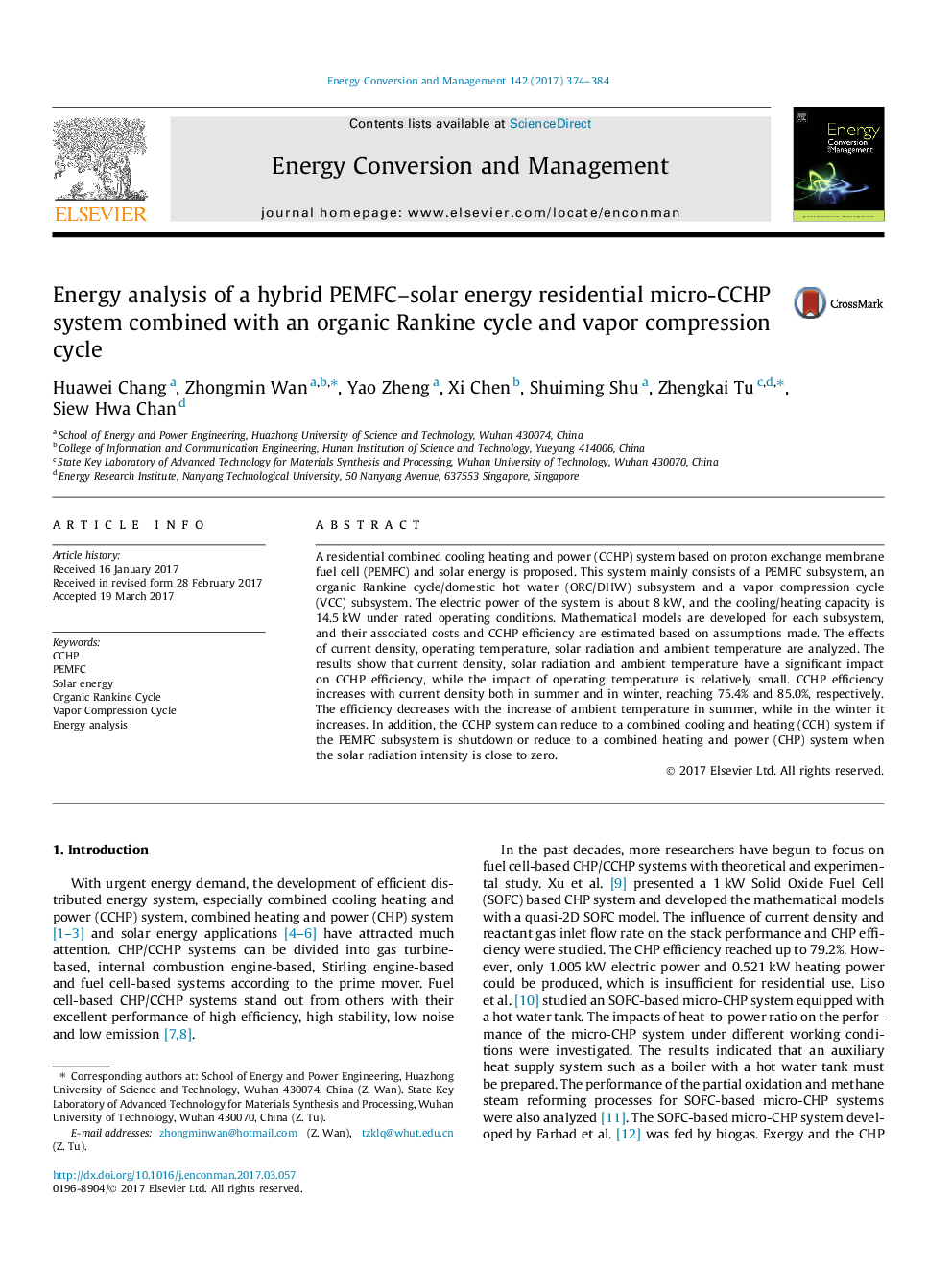| Article ID | Journal | Published Year | Pages | File Type |
|---|---|---|---|---|
| 5012814 | Energy Conversion and Management | 2017 | 11 Pages |
Abstract
A residential combined cooling heating and power (CCHP) system based on proton exchange membrane fuel cell (PEMFC) and solar energy is proposed. This system mainly consists of a PEMFC subsystem, an organic Rankine cycle/domestic hot water (ORC/DHW) subsystem and a vapor compression cycle (VCC) subsystem. The electric power of the system is about 8Â kW, and the cooling/heating capacity is 14.5Â kW under rated operating conditions. Mathematical models are developed for each subsystem, and their associated costs and CCHP efficiency are estimated based on assumptions made. The effects of current density, operating temperature, solar radiation and ambient temperature are analyzed. The results show that current density, solar radiation and ambient temperature have a significant impact on CCHP efficiency, while the impact of operating temperature is relatively small. CCHP efficiency increases with current density both in summer and in winter, reaching 75.4% and 85.0%, respectively. The efficiency decreases with the increase of ambient temperature in summer, while in the winter it increases. In addition, the CCHP system can reduce to a combined cooling and heating (CCH) system if the PEMFC subsystem is shutdown or reduce to a combined heating and power (CHP) system when the solar radiation intensity is close to zero.
Related Topics
Physical Sciences and Engineering
Energy
Energy (General)
Authors
Huawei Chang, Zhongmin Wan, Yao Zheng, Xi Chen, Shuiming Shu, Zhengkai Tu, Siew Hwa Chan,
